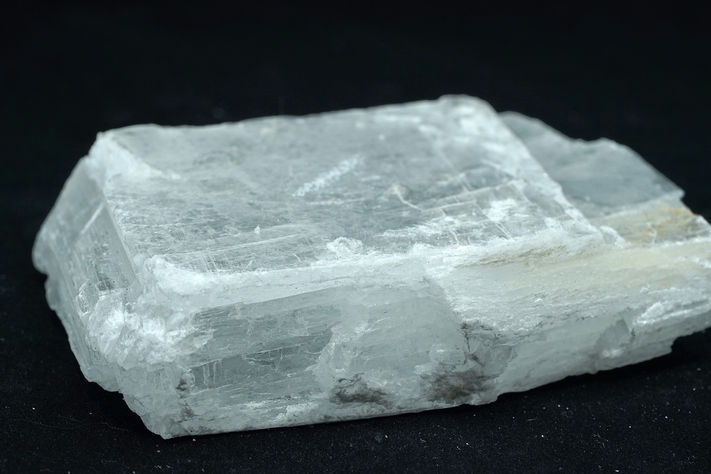Gypsum / 石膏
Description
Gypsum is a monoclinic mineral with chemical formula of CaSO4. It usually shows colourless to white colour. The hand specimen above has obvious two sets of perfect cleavages, intersecting at 60 degrees. The minerals are easily faked off as layers. Gypsum is an evaporate sulphate mineral and a hydrated form of anhydrite. Gypsum is formed as the evaporate in lagoon or playa. It is found often in sedimentary environments such as clay beds or deserts, where it may form desert roses. Its formation environments can be mud flats, deserts, volcanoes or hot springs. However, gypsum can be fertilizer, neutralizing acidic soil. Also, it can be tofu coagulant and the material for sculpture.
Basics
Non-silicate; Sulphate
Gypsum Group
CaSO4 2H2O
Monoclinic
Category
Mineral Group
Chemical Formula
Crystal System
Physical Properties
Tabular crystals, often with curved faces, sometimes massive or granular
Clear white, sometimes with shades of yellow, grey, red and brown
Transparent to translucent
Vitreous
White
Two sets of perfect cleavages, intersecting at 60 degrees
1.5 - 2.0
Flexible, inelastic
Appearance / Shape
Colour
Transparency
Lustre
Streak
Cleavage
Hardness (Mohr Scale)
Other Physical Properties
Others
-
Commonly found in sedimentary rocks, especially in marine salt deposits.
-
Presence in soils with evaporation of water or hydration of anhydrite.
-
Alteration products of sulphuric acid reacts with carbonate rock in oxidizing sulphide deposits, or sulphurous volcanic gases interact with rocks containing calcium
-
Appear as efflorescences in mines or as mineral deposits in underground cavern formations.
Used to manufacture dry wall, plaster, joint compound.
Agricultural soil treatment
Occurrence
Other Chemical Properties
Usage
Thin Section
Optical Properties:
Gypsum composes of calcium sulphate dihydrate (CaSO4 2H2O), whereas as anhydrite is CaSO4. Gypsum is seen as tabular or prismatic crystals under a microscope. Under polarized light gypsum is hard to identified as it is colourless with low relief. Gypsum shows two sets of cleavage which intersect at an approximately 90º angle. Evidence of cleavage can be seen at the centre right and top centre of the image. Gypsum does not show pleochroism. Under crossed polars, gypsum shows low birefringence with an interference colour of 1st-order grey, black and white. Gypsum under cross polars can be identified by inclined grain extinction and possible carlsbad twining.
- Hover to view XPL microgram





























